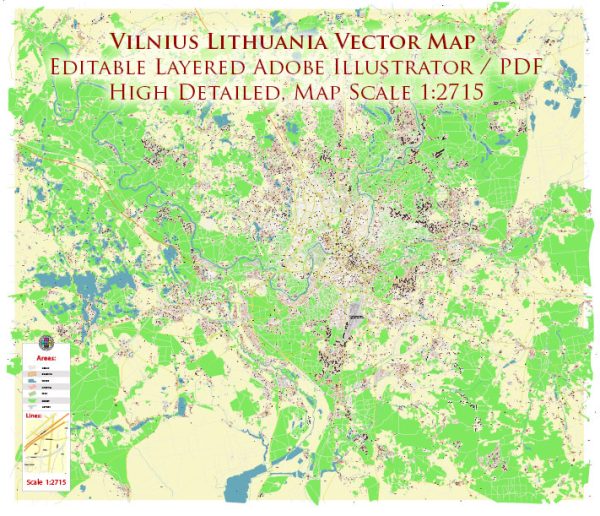Vilnius, the capital of Lithuania, is a city with a rich history and a diverse architectural heritage. Some of its most famous buildings and landmarks include:
- Vilnius Cathedral (Vilniaus Šv. Stanislovo ir Šv. Vladislovo arkikatedra bazilika): This neo-classical cathedral is one of the most iconic symbols of Vilnius and serves as the heart of the city. It dates back to the 18th century and is located in Cathedral Square.
- Gediminas’ Tower (Gedimino bokštas): This historic tower is part of the Gediminas Castle complex and offers stunning panoramic views of the city. It is a symbol of Vilnius and an important historical monument.
- St. Anne’s Church (Šv. Onos bažnyčia): Known for its striking Gothic architecture, St. Anne’s Church is a UNESCO World Heritage site and one of the most beautiful churches in the city.
- Užupis Angel: The Užupis district in Vilnius has declared itself an independent republic, complete with its constitution and even an angel statue symbolizing freedom and artistic expression. The angel is an important landmark in this creative and bohemian neighborhood.
- Vilnius University (Vilniaus universitetas): One of the oldest universities in Eastern Europe, Vilnius University boasts a beautiful campus with historic buildings, courtyards, and a rich academic tradition.
- Church of St. Peter and St. Paul (Šv. apaštalų Petro ir Povilo bažnyčia): This Baroque-style church is famous for its intricate and ornate interior, which is adorned with numerous stucco decorations.
- Presidential Palace (Prezidentūra): The official residence of the President of Lithuania, this neoclassical building is an important political and historical site.
- Three Crosses Hill (Trys kryžiai): The iconic crosses on the hill provide another vantage point to view the city, and the site is associated with a historical legend.
- National Opera and Ballet Theatre (Lietuvos nacionalinis operos ir baleto teatras): This elegant building hosts various performances and is a cultural hub in Vilnius.
- The House of Signatories (Signatarų namai): This building is historically significant as it was the location where the Act of Independence of Lithuania was signed on February 16, 1918, declaring Lithuania’s independence from Russia.
These are just a few of the many famous buildings and landmarks in Vilnius, each contributing to the city’s rich architectural and historical tapestry.



 Author: Kirill Shrayber, Ph.D.
Author: Kirill Shrayber, Ph.D.